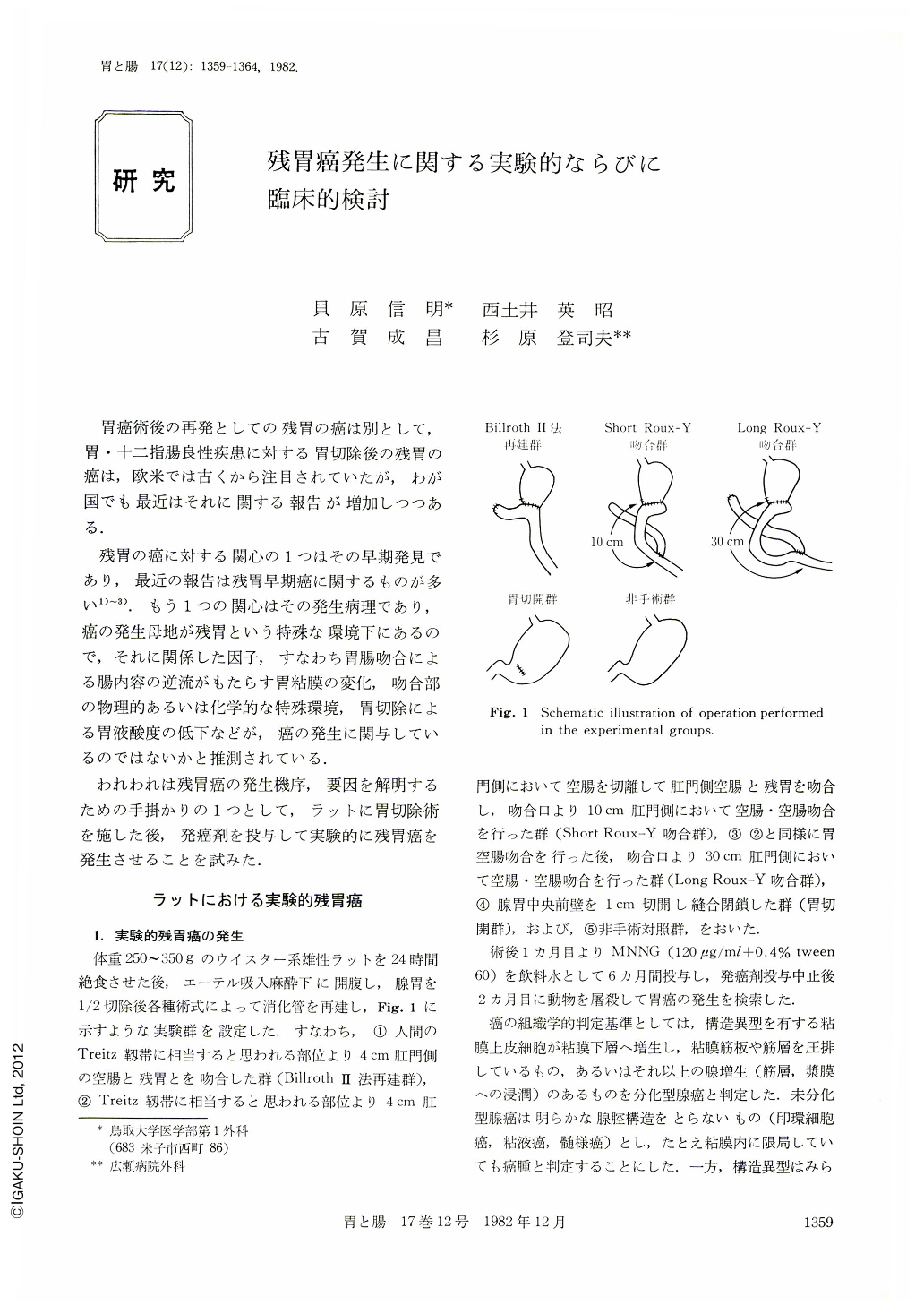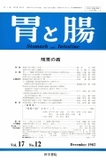Japanese
English
- 有料閲覧
- Abstract 文献概要
- 1ページ目 Look Inside
胃癌術後の再発としての残胃の癌は別として,胃・十二指腸良性疾患に対する胃切除後の残胃の癌は,欧米では古くから注目されていたが,わが国でも最近はそれに関する報告が増加しつつある.
残胃の癌に対する関心の1つはその早期発見であり,最近の報告は残胃早期癌に関するものが多い1)~3).もう1つの関心はその発生病理であり,癌の発生母地が残胃という特殊な環境下にあるので,それに関係した因子,すなわち胃腸吻合による腸内容の逆流がもたらす胃粘膜の変化,吻合部の物理的あるいは化学的な特殊環境,胃切除による胃液酸度の低下などが,癌の発生に関与しているのではないかと推測されている.
Gastric carcinoma was induced with N-methyl-N'-nitro-N-nitrosoguanidine (MNNG) in rats that underwent partial gastrectomy removing 1/2 of the glandular stomach. Adenocarcinoma developed in the remnant stomach with the incidence being 38.9% in rats that received Billroth Ⅱ reconstruction, 25.0% in those with short Roux-Y reconstruction, 7.1% in those with long Roux-Y reconstruction and 9.5% in the control, indicating higher incidence of gastric carcinoma in rats with greater amount of duodenogastric reflux. Site of the tumor developed in the remnant stomach was on the anastomotic region. These results suggest that the reflux of duodenal juice (including bile) is substantially related to the development of chemically-induced carcinoma of the gastric remnant.
In our series of patients with carcinoma of the gastric remnant, site of the tumor was on the stoma in 9 of 11 cases, which was in accordance with the animal model. Polypoid changes, termed histologically as gastritis cystica polyposa, are seen in the mucosa of the anastomosis and they have been interpreted as being related to carcinoma development. In the present study, a case of gastritis cystica polyposa with intramucosal carcinoma is presented.

Copyright © 1982, Igaku-Shoin Ltd. All rights reserved.


